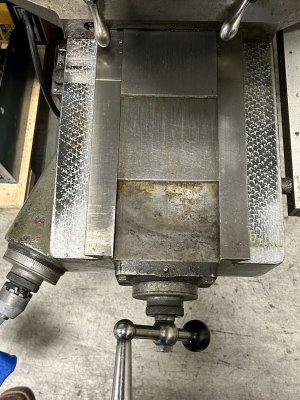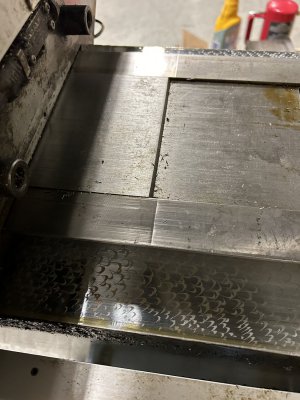- Joined
- Apr 24, 2021
- Messages
- 462
I am still in the process of cleaning and running power to my new to me Bridgeport. Adjust backlash and cleaning the mill up. Just doing a general check up. I was noticed some very deep ridges on the top of the ways. I don’t think that it affects the precision of the mill, but wanted to ask how that would occur? I will post the wear on the main scraped surface of the y axis ways, the second picture will be on the outside/top of the v way.



